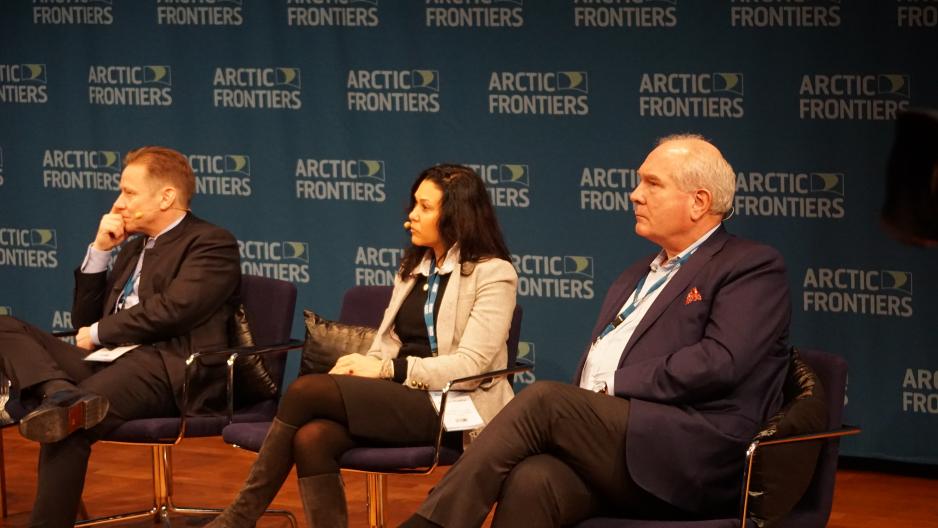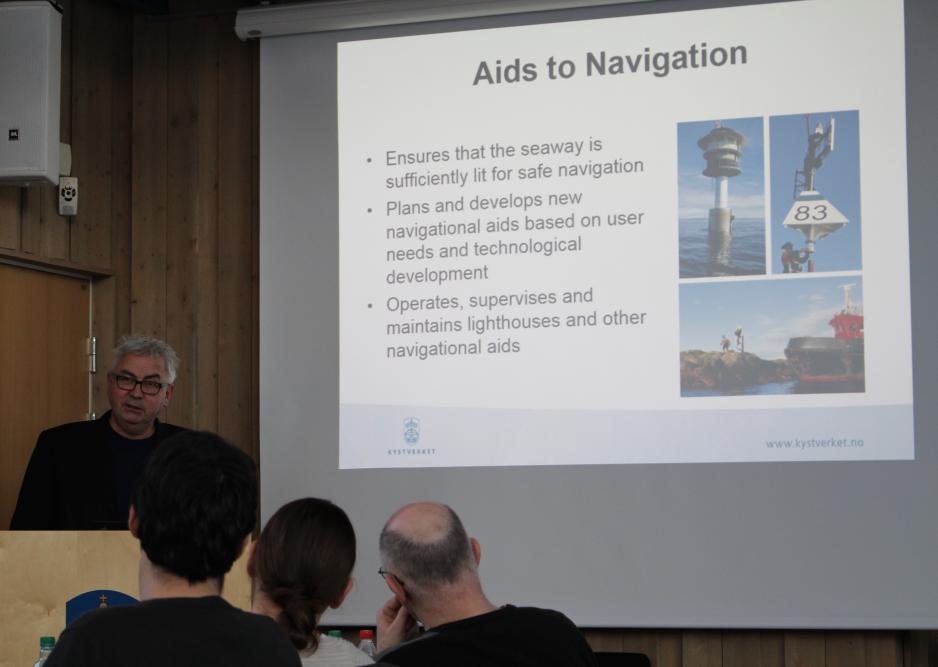Rural Arctic communities need to be integrated in SAR efforts

Local communities should work more closely with the Coast Guard when it comes to Search-and-Rescue (SAR) efforts in U.S. and Canadian Arctic waters, says Jessica Shadian, Nansen Professor at the University of Akureyri, Iceland.
Rural communities and local volunteer SAR organizations have difficulties coping with bigger accidents off the coast, which can have a huge impact on them.
Strengthening local response capacities
Shadian currently works with Jim Gamble, director of the Aleut International Association, on a project that aims at strengthening local response capacities and information exchange with the Coast Guards. They are “concerned with the fact that it could take one or two days to get three helicopters out there” in the case of an accident in Arctic waters that requires SAR efforts.
The goal of the research project is to map local capacities and analyze gaps. Furthermore, Shadian and Gamble want to give communities the opportunity to define the role they would like to play in SAR themselves. Their grant proposal to the National Science Foundation provides for visits to communities in Canada, Alaska and possibly Greenland to look at the situations and capacities there.
Improving information exchange
Most local SAR organizations are staffed with volunteers and don’t have the capacity to respond to big disasters, says Jessica Shadian. SAR meetings with representatives in Sand Point in Alaska and Nain in Labrador reached the conclusion that the collaboration and information exchange between local communities, volunteer organizations and the Coast Guards need to improve. Shadian points to the Arctic Coast Guard Forum, “a space, where the Coast Guards can collaborate, but it would be great to bring in local communities and volunteer organizations.”
Improving the information flow includes monitoring and feeding information to boats, the local development of measurement tools for oceans, the communication of fishermen’s and hunters’ knowledge, and the creation of real time information exchange with boats currently in the water.
Where do local volunteer organizations and Coast Guards meet?
One of the challenges to the collaboration between volunteer organization and Coast Guards is the different approach, which hampers communication efforts. Whereas Coast Guards are organized in a top-down structure, the communities, which are the first responders, follow a bottom-up logic. As a result, the latter often feel that they are not taken seriously by the Coast Guards and that their hands-on knowledge is not valued.
Strain on rural communities
The current SAR system in the U.S. and Canadian Arctic puts a strain on rural communities, who are likely to be closest to the incident and are then asked to host the rescued people until they can be flown out. During one incident with a tourist ship off the Canadian coast, the community who welcomed the stranded tourists opened their hearts, and provided them with food and fuel. However, it was difficult to solve the issue of who was responsible for compensating the community for its expenses.
Developing insurance
The questions are: Who replenishes these supplies? Who pays for it? This is particularly problematic for some rural communities that have all their supplies shipped in twice a year. Shadian contends that the International Maritime Organization (IMO) should start thinking about the role insurance providers can and should play in compensating local SAR organizations and communities, rather than emphasizing compensation for passengers and damages to a tourist ship, for example..
Best practice from Norway
Norway’s solution to the insurance problem is the Norwegian Clean Seas Association for Operating Companies (NOFO). Offshore operators pay into a fund, which bears the costs of training local fishermen and providing them with a salary, retrofitting their boats, and buying equipment. While NOFO is designed for oil spills, it could serve as the basis for a similar SAR fund, where especially tourism operators could contribute to establishing a SAR infrastructure.
According to Fridtjof Wangsvik, regional director of the Norwegian Coastal Administration (Kystverket), NOFO works well in Norway thanks to regulations supporting local communities and other levels involved. The “closeness principle” that applies stipulates that an accident should be taken care of at the lowest possible level.

A supportive state
Whereas it is up to municipalities and contracted businesses to handle SAR activities, the Norwegian state assists the efforts, both in terms of infrastructure and resources. The financial base is covered through the ‘polluter pays’ principle, which makes polluting companies pay for the damage they inflict. “The introduction of a tax in the U.S. and Canada to finance SAR activities would be a good starting point to enable local communities to better respond to accidents and improve preparedness”, Wangsvik suggests.
Building governance infrastructure for economic development
A lot of groundwork is needed for generating activity in the U.S. and Canadian Arctic coastal region, Jessica Shadian argues. However, the integration of communities into a network for SAR purposes could boost economic development. The trend of increasing tourism to Arctic regions could very well elicit interest from financiers to build infrastructure, such as ports and roads. The existence of physical infrastructure would also contribute to building the necessary governance infrastructure help create and ensure healthy and sustainable community development in the Arctic.
The biggest contribution of Shadian and Gamble’s project might be to help set up governance institutions for different entities working together in order to support people who want to come to the region to further economic development. This could also entail an information center for businesses to make it easier for them to start off in the region. In fact, Shadian - along with former Alaska Senator, Lesil McGuire; former Mayor of Longyearbyen, Christin Kristoffersen; and Inuit politician, Rosemarie Kuptana - have already created The Arctic Advocacy Group (AAG). AAG is designed to support responsible, cultural, and economic development by assisting governments, private industry, and other parties in developing and synergizing ideas on Arctic issues, make suggestions for action, and to help put thought into action.
Bringing companies and communities together
The private-public collaborations that AAG is helping to create brings together local communities, governance, and in the case of SAR, shipping and fishing industries. Even though, in certain instances, cooperations are starting to develop, further strengthening as well as expanding those ties is going to be essential moving into the future, says Shadian.
